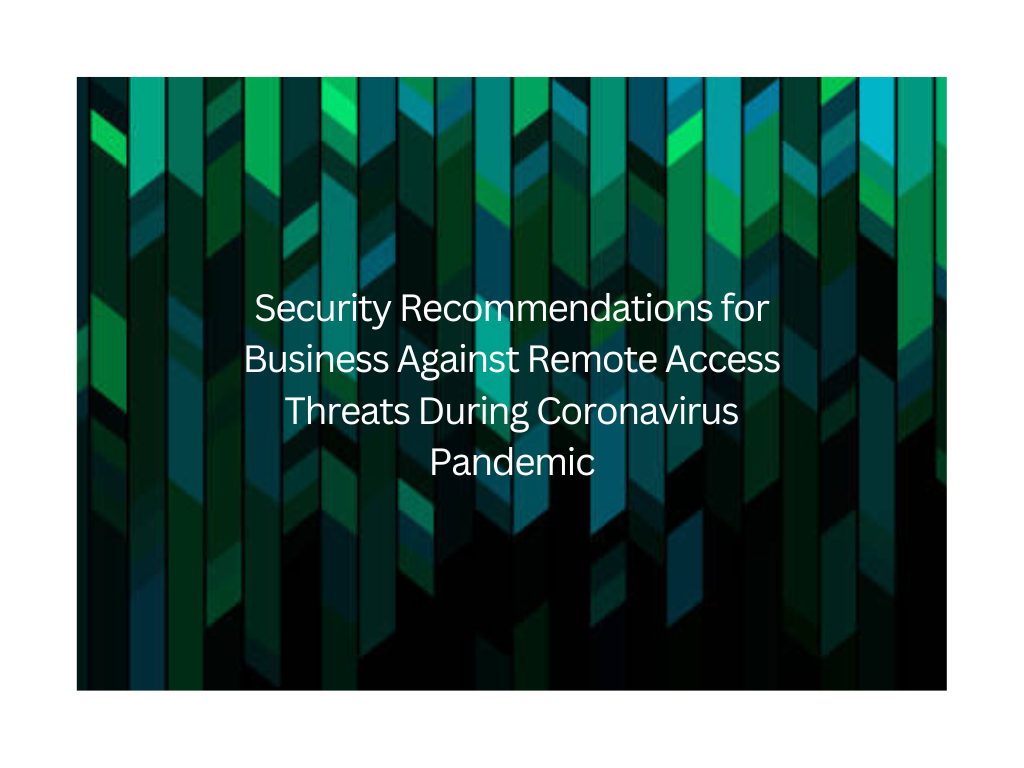To avoid further spread of Coronavirus and control this outbreak, Prime Minister Narendra Modi has declared a lockdown of 21 days + 19 days. Organizations are supporting this decision and have requested employees to work from home. It means you need to leverage remote Desktop and Virtual Private Networks (VPNs) to connect to services.
This pandemic while on one hand lockdown employees at home, on the other hand, it has open doors for cyber threats specifically targeting solutions and networks.
What in actual remote access solutions requires organizations?
- Service exposure from their premises
- Internet access for the same
Moving forward, remote access relies mostly on solution security posture and user identification solution with which it integrates.
Looking at the current situation, as organizations are now adapting remote access rapidly for day-to-day tasks, it is highly essential to consider proactive measures. This will help ensure protection against the threat and help to maintain business continuity.
Unfortunately, the exposure of this critical service on the internet can cause service disruption via distributed denial-of-service (DDoS) attacks.
An Insight into DDoS Attack
DDoS attacks can potentially use different sources to produce as well as send malicious traffic to the target. A volumetric DDoS attack consumes all available bandwidth and causes service disruption. Though clean pipe solutions offer reliefs against bandwidth restriction using threshold filtering but don’t distinguish good and malicious traffic. As a result, most remote users either indefinitely or intermittently gets affected by cyber-attacks.
DDoS attacks aren’t just inclined to volumetric. The insidious identifies and uses protocol intricacies of exposed services to target specific weaknesses. Generally, web services and VPN solutions of an organization rely heavily on Transport Layer Security (TLS) or Secure Socket Layer (SSL) for two purposes:
__Ensure transmitted data confidentiality Authenticate both sides communication__
Apart from these, the Encrypted attacks are also available. What do these attacks do?
- Target the SSL handshake mechanism
- Send malicious data to the SSL server
- Abuse key negotiation process of the SSL encryption
- Avail benefit of asymmetric resource requirements
- Execute SSL session handshakes
In comparison to the client, a single SSL session handshake utilizes fifteen times more server resources. Due to this asymmetry, cybercriminals can easily bring down large infrastructures just via limited resources. As compared to other attacks, these are pretty tough to detect as they don’t generate massive traffic, before the service disruption.
How to Protect Against Denial of Service Attack?
To avoid service disruption and ensure continued availability of mission-critical services, HaltDos recommends an Integrated Web Application Firewall and DDoS Mitigation solution that combines the benefit of both. This Integrated solution ensures 360° Protection for your network and application servers.
This unique solution intelligently fits into an organization’s security architecture and elevates the importance of selecting a full-featured solution. It blocks network layer & application layer DDoS and other attack vectors directed at web-facing applications as well as towards a network. It also ensures ultimate protection against data loss. Its strong authentication and access control capabilities restrict access to sensitive data as well as applications.
For more details and free demo, contact Haltdos at info@haltdos.com




